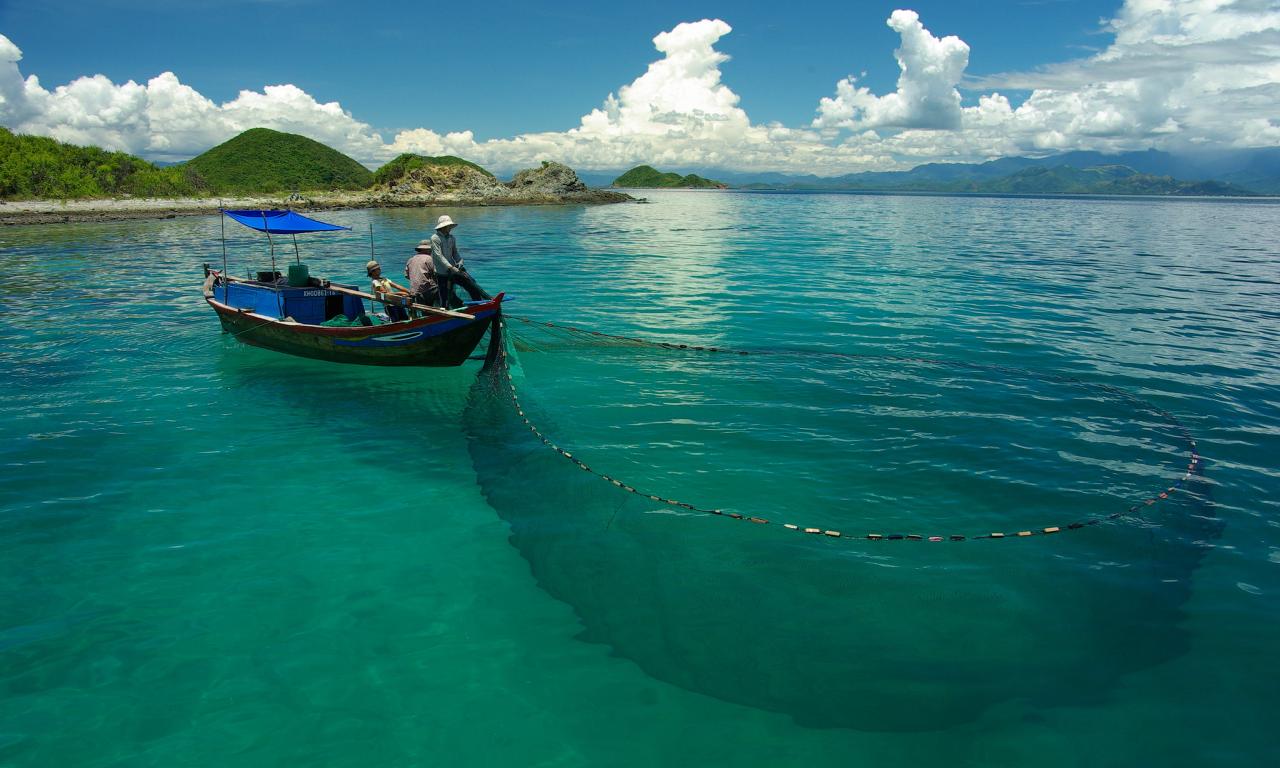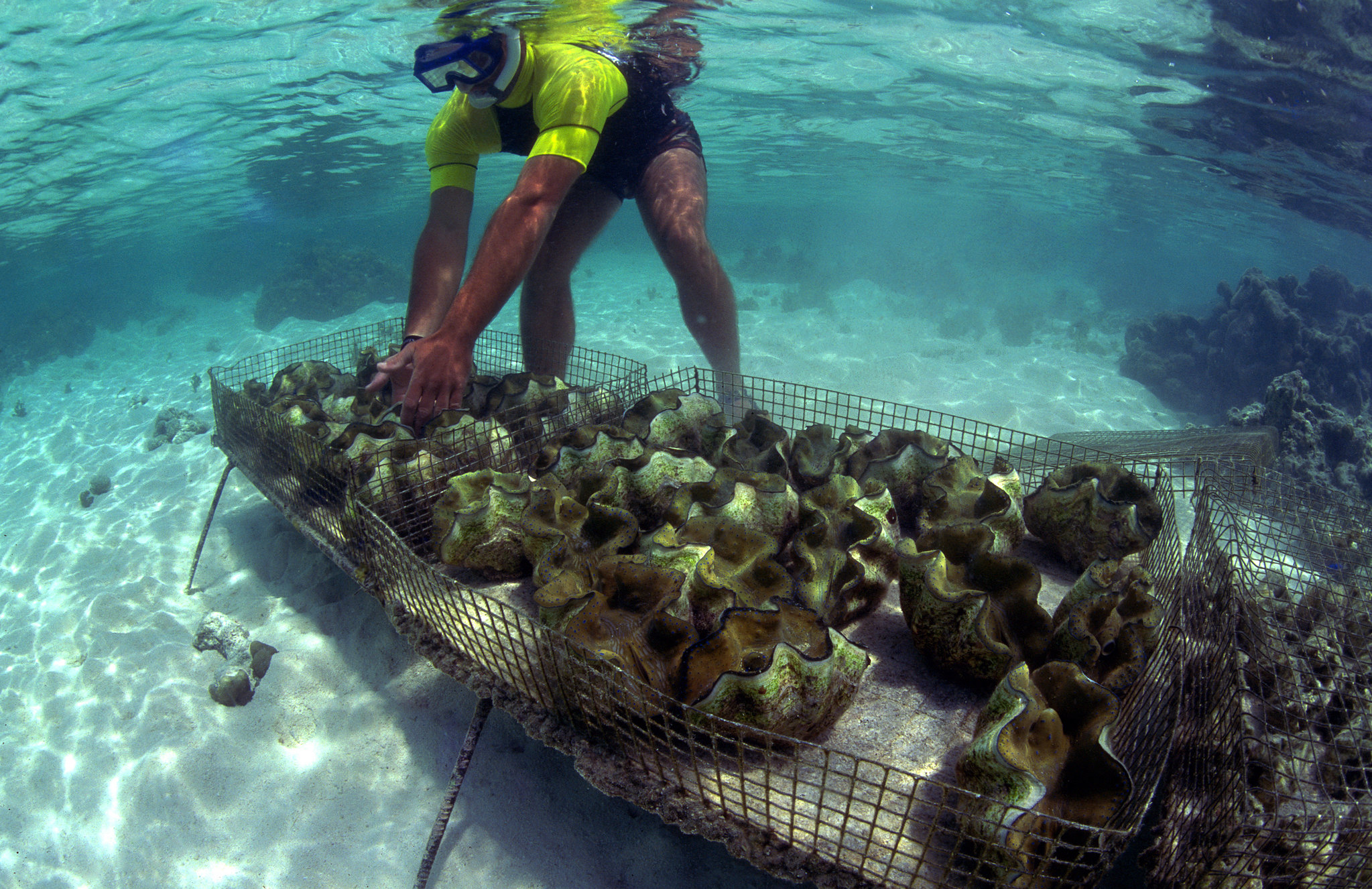
- A series of five Blue Food Assessment papers provide a comprehensive review of the opportunities and challenges posed by the aquatic food sector around the world
- Data-driven research is critical to directing food systems onto a more equitable and sustainable path
- Aquatic foods are essential to a global food systems transformation and must be prioritized by policymakers
Food systems account for half of the earth’s biocapacity and are responsible for 25 percent of all greenhouse gas emissions, straining the planet’s ability to sustain the human population. As a result, a growing body of research is supporting the call for a food systems transformation that changes the way the world produces, consumes and thinks about food, with aquatic foods playing a critical role in the transition.
A new comprehensive review has thus examined how aquatic food systems, comprising both capture fisheries and aquaculture, can deliver healthy, sustainable diets and decent livelihoods while minimizing the environmental impact of food production.
As part of the Blue Food Assessment, five peer-reviewed papers were published to highlight opportunities in the coming decades to leverage the vast diversity of aquatic foods to achieve the Sustainable Development Goals – namely poverty eradication, zero hunger, decent work and the preservation of life below water.
The Blue Food Assessment (BFA) is an international joint initiative that brings together over 100 scientists from more than 25 institutions. Led by the Stockholm Resilience Center, Stanford University’s Center for Ocean Solutions and EAT, with research contributions from WorldFish's scientists and partners, the interdisciplinary team supports decision-makers in crafting policies that support resilient and sustainable aquatic food systems.
“The Blue Food Assessment is the first concerted effort rooted in rigorous science to systematically analyze the assumptions, trade-offs, opportunities and challenges associated with integrating blue foods into the food system. It is exactly this type of rigorous, inclusive and data-driven analysis that should guide policymaking decisions,” said Magdalena Skipper, editor-in-chief of the journal Nature.
The papers were released at an online launch of the assessment, where researchers, practitioners and changemakers discussed the respective findings and their larger implications.
The five systemic reviews found that demand for aquatic foods is expected to double by 2050, climate change gravely threatens aquatic food systems, aquatic foods produce lower greenhouse gas emissions than terrestrial food systems on average, aquatic foods are nutritionally diverse and integral to tackling diet-related noncommunicable diseases and small-scale aquatic food actors are essential to food security in low- and middle-income countries.
“The reviews have demonstrated that aquatic foods are the closest we have to a ‘nature-based solution’ to the challenge of transforming our current food system to one that is healthier, more sustainable and more fairly distributed,” said Eddie Allison, a member of the BFA Scientific Leadership Team and the interim director of science and research at WorldFish.
Demand for aquatic foods set to double
At present, aquatic foods are vital for the health and nourishment of three billion people and the livelihoods of eight hundred million people around the world, with the numbers expected to rise in the coming decades.
As part of the assessment, Blue Food Demand Across Geographic and Temporal Scales evaluated trends in aquatic food demand across spatial and temporal scales, finding that demand for aquatic foods is projected to grow rapidly and nearly double by 2050. Demand in sub-Saharan Africa was expected to increase, with demand outpacing domestic supplies, thereby threatening low-income consumers who cannot afford to pay for costly imported aquatic foods.
To meet increasing demand for aquatic foods—and support sustainable and fair food systems in the process—it’s critical to understand how different factors shape and constrain aquatic food consumption around the world, explained the paper’s authors.
Harnessing the nutritional diversity of aquatic foods
There are more than 2,500 species of aquatic foods that are captured or cultivated in the oceans, rivers, lakes and ponds. Their diversity is often overlooked by policymakers, who focus on a few high-trophic fish species like salmon or trout.
“We must acknowledge and make use of the diversity of aquatic foods, including lower trophic species such as bivalves, mollusks and seaweeds, in order to get the full benefits of aquatic foods for nourishing people. These aquatic foods are superfoods due to their large concentrations of highly available micronutrients and essential fatty acids, and they must also be valued by policymakers,” said event panelist Shakuntala Thilsted, co-author of Aquatic Foods to Nourish Nations and WorldFish’s global lead for nutrition and public health.
Diverse aquatic foods can be leveraged to nourish both people and planet, tackling the triple burden of malnutrition through nature-positive production.
Supporting small-scale aquatic food actors
Although smaller than industrial operations, small-scale fisheries produce the majority of aquatic foods intended for human consumption and over half of the world’s fish catch. The majority of catch is also consumed locally but poaching by industrial-scale fishing threatens this crucial supply of nutrition and income to the poor and vulnerable.
“We need to make small-scale fishers the priority; they are the ones who need the most support but receive the least,” said panelist Masanori Miyahara, Japan’s Minister of Agriculture, Forestry and Fisheries.
Using 70 case studies from across the world, the authors of the BFA paper Harnessing the Diversity of Small-Scale Actors is Key to the Future of Aquatic Food Systems highlighted opportunities for policymakers to design tailored solutions that support the diversity and capabilities of small-scale aquatic food actors.
Evaluating the environmental performance of aquatic foods

The Blue Foods Assessment emphasized the need to shift from terrestrial-land based food production systems, responsible for widespread deforestation and environmental degradation, to more sustainable aquatic food systems with a lower carbon footprint.
“Seventy-five percent of our calories come from 12 plants and five animals. Our heavy reliance on a few foods from land is not good for human or planetary health,” said event panelist Joao Campari, global leader of food practice at World Wildlife Fund.
The Environmental Performance of Blue Foods paper compared the environmental impact of a range of aquatic foods across scales in order to inform sustainable diets and fill in crucial data gaps in environmental impact studies. It determined that farmed seaweeds and bivalves produce the lowest greenhouse gas emissions, followed by small pelagic capture fisheries like sardines.
Mitigating the impacts of climate change
Climate change gravely threatens the small-scale fisheries and aquaculture sector; impacts like ocean acidification, prolonged droughts and more frequent flooding hinder these systems’ ability to reliably produce aquatic foods and poses significant risks to food and nutrition security.
In Compound Climate Risks Threaten Aquatic Food System Benefits, researchers evaluated how risks and hazards can be reduced, strengthening the resilience of fishers, fish farmers and other aquatic food value chain actors.
“The study will be instrumental in informing investment and policy intervention points to mitigate the impacts of climate change and ensure aquatic food systems can continue to make significant contributions to food and nutritional security,” said co-author Essam Yassin Mohammed, WorldFish’s global lead for climate resilience and environmental sustainability.
